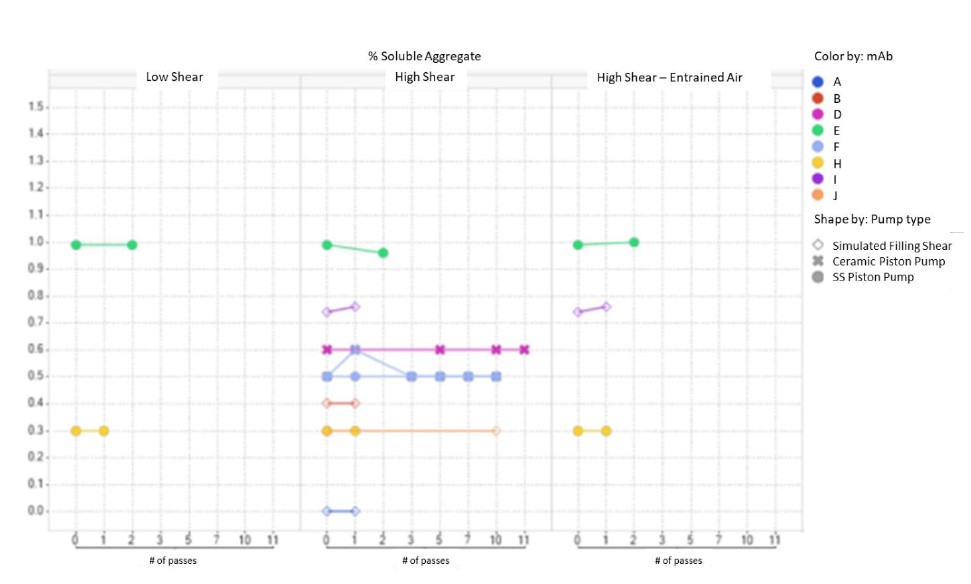Formulation and Delivery - Biomolecular
(T1130-03-18) Leveraging Prior Knowledge for Drug Product Development: A Streamlined Lab-Scale Process Characterization Study Approach
Tuesday, October 22, 2024
11:30 AM - 12:30 PM MT

Leigh Bohack, BS
Sr Scientist
Pfizer Inc.
Chesterfield, Missouri, United States
Parag Kolhe, Ph.D.
Sr Director
Pfizer Inc.
Andover, Massachusetts, United States
Presenting Author(s)
Main Author(s)
Purpose: Regulatory guidance and ICH Q8, Q10, and Q11 guidelines highlight the utilization of prior knowledge during pharmaceutical product development. Using prior knowledge with appropriate rationale to streamline and accelerate product development is gaining wider acceptance. Prior knowledge encompasses the experience used to develop widely established platforms, product behavior, and relevance of specific products in question to this demonstrated knowledge and its application to ensure safe and efficacious pharmaceutical products in the hands of patients.
Methods: Through case studies, we present a holistic approach for using prior knowledge and platform monoclonal antibody drug product process development approaches to develop incoming monoclonal antibodies. Risk based approaches have been developed to assess the suitability of the development candidate antibody to fit the platform knowledge. Compiled prior knowledge summaries were used as tools in this risk-based approach and high-level summaries that tie product development and holistic strategy of applying the prior knowledge based on these results will be presented in the poster.
Results: These summaries include data from up to 10 monoclonal antibodies (mAbs) that show impact of manufacturing stresses such as mixing, filling shear, freezing and thawing, and material contact/compatibility. An example of compiled prior knowledge data can be seen in the % Soluble Aggregate graph. This graph represents data from multiple monoclonal antibodies that were passed through tubing multiple times to simulate filling shear. Varying rates of shear and combined shear and air-water interface stresses were applied. The data demonstrates that filling shear did not cause a significant change in soluble aggregation in any mAb tested.
Conclusion: By using a prior knowledge approach, the number of lab-scale process characterization studies were eliminated or reduced which reduced the resources and timeline needed for these activities. The presented case studies will include how the approach was applied, challenges and watch outs along with suggested approach for the industry.

% Soluble Aggregate

Eliminated or modified studies
Methods: Through case studies, we present a holistic approach for using prior knowledge and platform monoclonal antibody drug product process development approaches to develop incoming monoclonal antibodies. Risk based approaches have been developed to assess the suitability of the development candidate antibody to fit the platform knowledge. Compiled prior knowledge summaries were used as tools in this risk-based approach and high-level summaries that tie product development and holistic strategy of applying the prior knowledge based on these results will be presented in the poster.
Results: These summaries include data from up to 10 monoclonal antibodies (mAbs) that show impact of manufacturing stresses such as mixing, filling shear, freezing and thawing, and material contact/compatibility. An example of compiled prior knowledge data can be seen in the % Soluble Aggregate graph. This graph represents data from multiple monoclonal antibodies that were passed through tubing multiple times to simulate filling shear. Varying rates of shear and combined shear and air-water interface stresses were applied. The data demonstrates that filling shear did not cause a significant change in soluble aggregation in any mAb tested.
Conclusion: By using a prior knowledge approach, the number of lab-scale process characterization studies were eliminated or reduced which reduced the resources and timeline needed for these activities. The presented case studies will include how the approach was applied, challenges and watch outs along with suggested approach for the industry.

% Soluble Aggregate

Eliminated or modified studies
